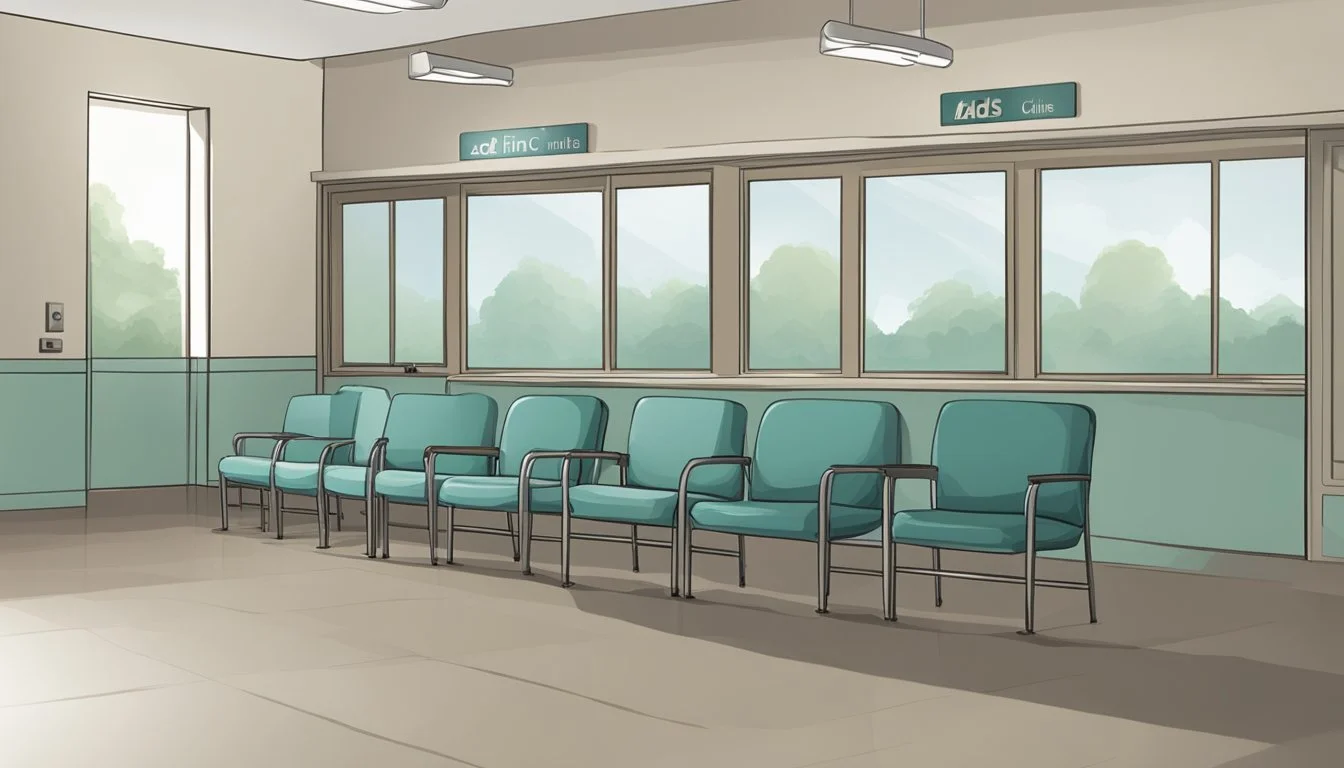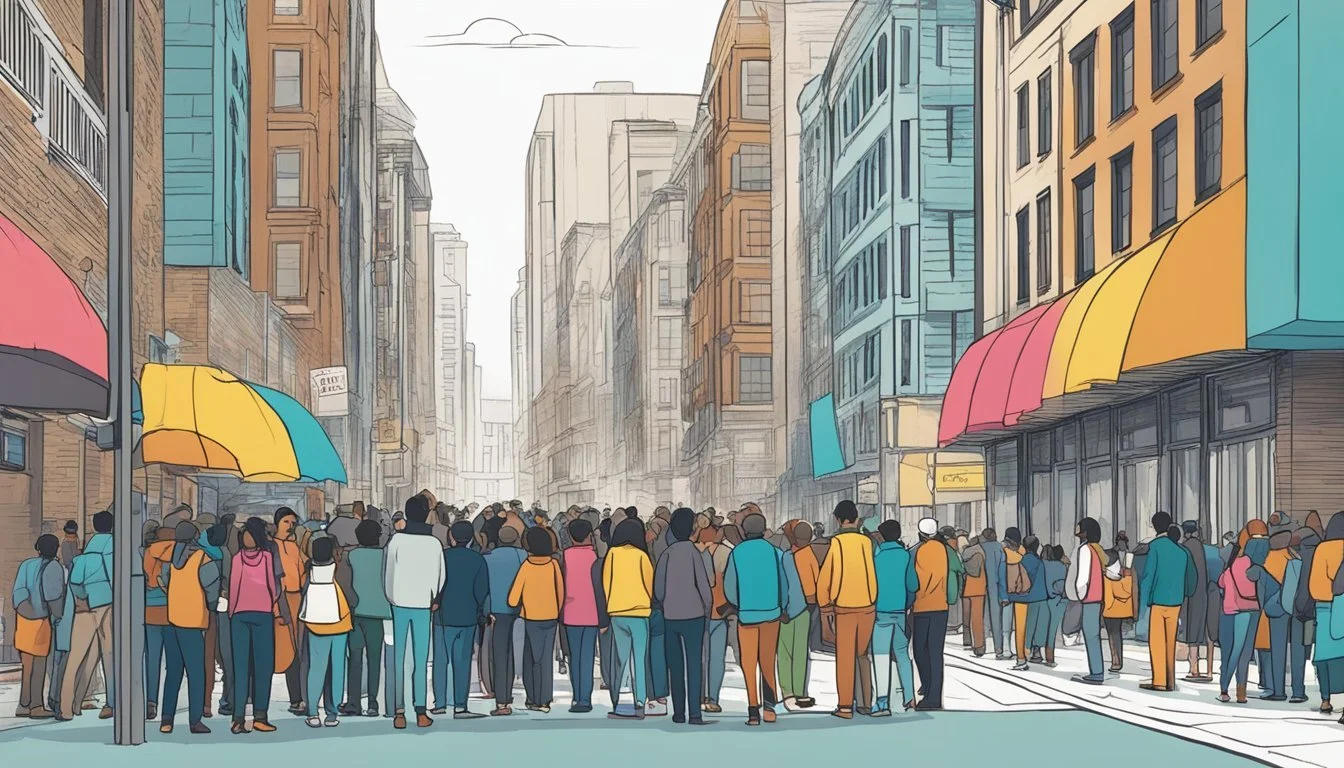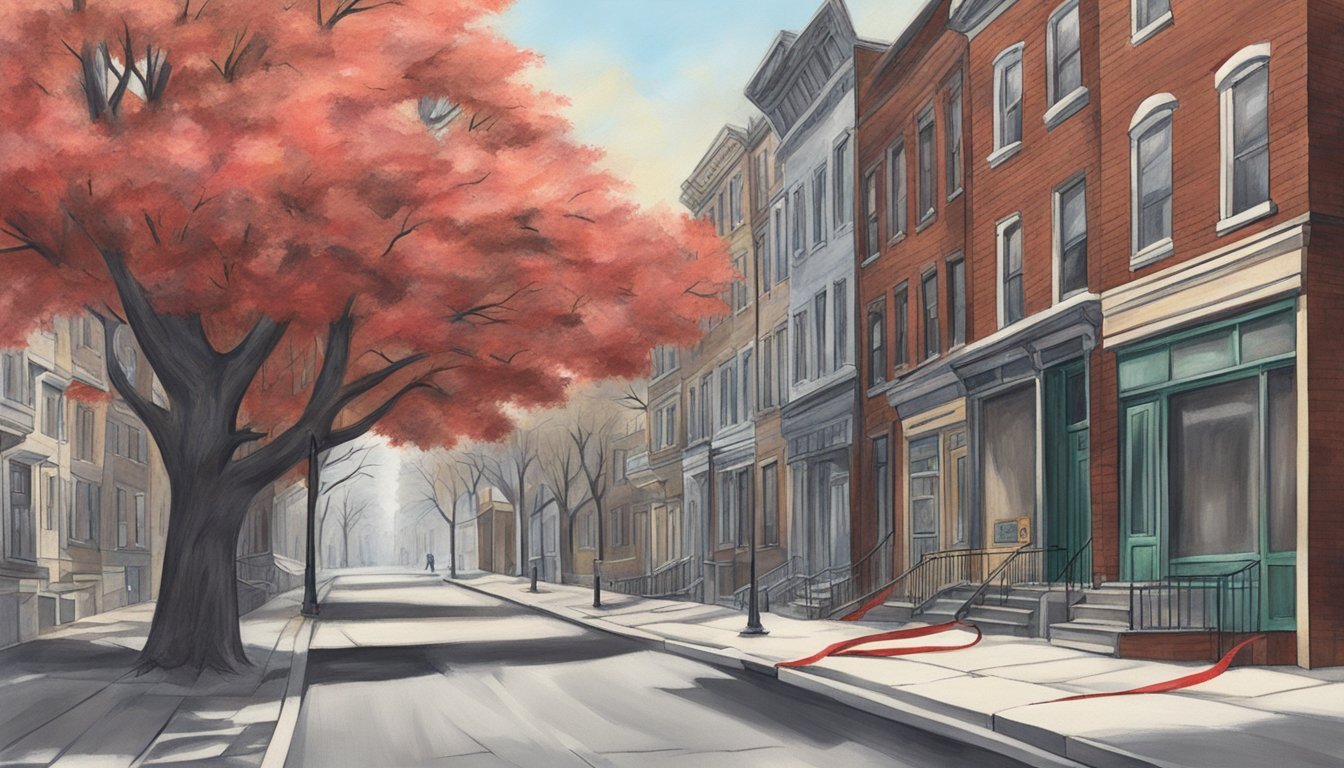The Actual Philadelphia
AIDS Discrimination Exposed in 1990s America
The 1993 film "Philadelphia" brought AIDS discrimination into the cultural spotlight, but it reflected very real legal battles occurring in the city at the time. Throughout the 1980s and early 1990s, people living with AIDS faced rampant discrimination in workplaces, housing, and healthcare. Several high-profile lawsuits in Philadelphia during this period closely mirrored the plot of the Oscar-winning drama, highlighting the pervasive prejudice and misinformation surrounding the epidemic.
Legal cases in Philadelphia became influential examples in the fight for AIDS patients' rights. Attorneys and activists worked to combat unjust terminations, denial of medical care, and other forms of discrimination. These efforts helped shape new policies and protections for individuals affected by HIV/AIDS. The city's courtrooms served as battlegrounds where societal attitudes were challenged and slowly began to shift.
"Philadelphia" drew inspiration from these real-life cases, dramatizing the struggles faced by many Americans. While the film raised awareness, it also simplified complex issues. The actual legal and social landscape in 1990s Philadelphia involved nuanced challenges as the medical community, legal system, and general public grappled with the realities of the AIDS crisis.
Historical Background of AIDS in the United States
AIDS emerged as a devastating epidemic in the United States in the early 1980s. Its rapid spread and initial lack of understanding led to widespread fear, discrimination, and misinformation.
Origin and Spread of HIV/AIDS
HIV, the virus that causes AIDS, likely originated in central Africa in the early 20th century. It reached the United States by the 1970s. The first official report of AIDS came in 1981, describing rare infections in five young gay men in Los Angeles.
Cases quickly multiplied across major cities. By 1985, every region of the world had reported at least one case of AIDS. The virus disproportionately affected gay and bisexual men, intravenous drug users, and hemophiliacs.
In the late 1980s, AIDS became the leading cause of death for U.S. men aged 25-44. By 1992, it was the number one cause of death for all Americans in this age group.
Early Responses and Misconceptions
Initial public response to AIDS was slow and often misguided. Many incorrectly believed it only affected gay men, leading to increased discrimination. Some religious leaders claimed it was divine punishment.
The U.S. government's early reaction was limited. President Reagan didn't publicly mention AIDS until 1985, four years into the epidemic. This slow response fueled activist movements like ACT UP.
Medical professionals scrambled to understand the disease. Early treatments were largely ineffective. The first HIV test became available in 1985, but fear and stigma deterred many from getting tested.
Media coverage often sensationalized the epidemic, spreading misinformation. This contributed to widespread panic and further marginalization of affected communities.
Socio-Political Context of the 1990s
The 1990s saw significant shifts in attitudes and policies towards AIDS and discrimination. Public sentiment and governmental approaches evolved, while legal frameworks adapted to address emerging challenges.
Governmental Policies and Public Sentiment
President George H.W. Bush signed the Americans with Disabilities Act in 1990, providing protections for people with AIDS. This marked a turning point in federal policy. The Ryan White CARE Act, passed the same year, allocated funds for HIV/AIDS treatment and support services.
Public awareness campaigns increased, though stigma persisted. Celebrity activism, like Princess Diana's handshake with an AIDS patient, helped challenge misconceptions. The introduction of antiretroviral therapy in 1996 transformed AIDS from a death sentence to a manageable condition for many.
Activism intensified, with groups like ACT UP demanding faster drug approvals and increased research funding. Their efforts contributed to policy changes and greater public understanding of the epidemic.
Legal Framework Surrounding Discrimination
The Americans with Disabilities Act prohibited discrimination against people with HIV/AIDS in employment, housing, and public accommodations. This law provided crucial protections, though enforcement challenges remained.
Several high-profile court cases in the 1990s helped establish legal precedents. The Supreme Court's Bragdon v. Abbott decision in 1998 confirmed that HIV was covered under the ADA, even without symptoms.
Many cities and states enacted their own anti-discrimination laws. Philadelphia, for instance, faced several AIDS discrimination lawsuits mirroring the plot of the film "Philadelphia." These cases highlighted ongoing legal battles against workplace discrimination.
Despite legal protections, many individuals still faced barriers in healthcare, employment, and daily life. Advocacy groups worked to educate the public and push for stronger enforcement of anti-discrimination laws.
Discrimination Against People With AIDS
People with AIDS faced widespread discrimination in various aspects of life during the 1990s. This prejudice manifested in workplaces, housing, healthcare settings, and social interactions, severely impacting their quality of life and access to essential services.
Workplace Discrimination
Many individuals with AIDS experienced unfair treatment at work. Employers often fired or refused to hire people upon learning of their HIV status. Some companies conducted illegal AIDS testing or violated confidentiality by disclosing employees' health information.
The film "Philadelphia" depicted a scenario based on real discrimination cases. Lawyers with AIDS faced particular challenges, as illustrated by high-profile lawsuits in Philadelphia mirroring the movie's plot.
Legal protections were limited, making it difficult for victims to seek justice. The Americans with Disabilities Act of 1990 eventually provided some safeguards, but implementation and enforcement remained inconsistent throughout the decade.
Housing and Accommodation Challenges
Securing housing was a major hurdle for people with AIDS in the 1990s. Landlords often evicted tenants or refused to rent to individuals known to have HIV/AIDS. This discrimination forced many into substandard living conditions or homelessness.
Some property owners implemented invasive screening processes to identify and exclude potential tenants with AIDS. These practices were often illegal but went unchallenged due to victims' fear of public exposure.
Community opposition to AIDS hospices and group homes was common. NIMBY (Not In My Back Yard) attitudes prevailed, with residents protesting against facilities in their neighborhoods.
Healthcare Inequalities and Issues
Despite their increased need for medical care, people with AIDS faced significant barriers in healthcare settings. Some medical professionals refused to treat AIDS patients or provided substandard care due to fear and prejudice.
Denial of treatment was particularly prevalent in specialized services like dental care and elective surgeries. Many healthcare workers lacked proper training in AIDS care and infection control, leading to unnecessary precautions that further stigmatized patients.
Insurance companies often discriminated against people with AIDS by denying coverage or charging exorbitant premiums. This left many unable to afford necessary treatments and medications.
Stigmatization in Social Settings
Social rejection was a painful reality for many people with AIDS. Friends and family members sometimes distanced themselves due to fear and misunderstanding about HIV transmission.
Public spaces like restaurants, gyms, and swimming pools often discriminated against individuals known to have AIDS. This exclusion led to isolation and mental health challenges for many affected people.
Children with AIDS faced particular difficulties in schools. Some parents and administrators pushed for their exclusion from classrooms, despite evidence that casual contact posed no risk of transmission.
Religious institutions varied in their responses, with some offering support while others contributed to stigmatization through moralistic judgments about the disease's origins.
The Philadelphia Experience
Philadelphia in the 1990s faced significant challenges related to AIDS discrimination. The city grappled with legal battles, community responses, and media representation as it navigated this complex issue.
Local Government and Community Responses
Philadelphia's local government took steps to address AIDS discrimination. In 1982, the city established the AIDS Activities Coordinating Office to provide education and support services. Mayor Wilson Goode signed an executive order in 1988 prohibiting discrimination against people with AIDS in city employment and services.
Community organizations played a crucial role. ActionAIDS, founded in 1986, offered buddy programs and practical assistance to those affected. The AIDS Law Project of Pennsylvania provided free legal services to people with HIV/AIDS facing discrimination.
The Philadelphia AIDS Task Force coordinated efforts between government agencies and community groups. They organized awareness campaigns and lobbied for policy changes.
Notable Cases and Legal Battles
Several high-profile AIDS discrimination cases emerged in Philadelphia during the 1990s. One notable case involved Scott Burr, a lawyer who sued his former employer for wrongful termination due to his HIV status.
The case of Caitlin Ryan v. Nassau County Board of Cooperative Educational Services set a precedent. It established that schools could not exclude students with HIV/AIDS.
Another significant legal battle involved a dental hygienist who claimed she was fired after refusing to treat HIV-positive patients. The court ruled in favor of the employer, affirming the duty to treat all patients regardless of HIV status.
These cases highlighted the need for stronger anti-discrimination laws and education about HIV transmission.
Impact on the LGBTQ+ Community
AIDS discrimination disproportionately affected Philadelphia's LGBTQ+ community. Many faced job loss, housing discrimination, and social ostracism due to their HIV status or perceived risk.
The crisis spurred increased activism within the community. Organizations like ACT UP Philadelphia staged protests and demanded better healthcare access and research funding.
Support networks emerged to help those affected. The Gay and Lesbian Community Center provided counseling services and support groups.
The epidemic also led to greater visibility for LGBTQ+ issues in the city. It fostered dialogue about healthcare equality and civil rights for the community.
Media Representation and Influence
Philadelphia-based media played a role in shaping public perception of AIDS. Local newspapers like The Philadelphia Inquirer covered the epidemic, highlighting both medical developments and human interest stories.
The 1993 film "Philadelphia," set in the city, brought national attention to AIDS discrimination. It portrayed a lawyer fighting wrongful termination due to his HIV status.
Local television stations aired public service announcements about HIV prevention and combating stigma. WHYY, Philadelphia's public broadcasting station, produced documentaries exploring the impact of AIDS on the city.
These media efforts helped educate the public and challenge misconceptions about HIV/AIDS, contributing to changing attitudes over time.
Advocacy and Activism
AIDS advocacy in Philadelphia during the 1990s emerged as a powerful force, combining grassroots activism, organizational support, and artistic expression to combat discrimination and raise awareness.
Rise of AIDS Activism
ACT UP Philadelphia formed in 1988, becoming a prominent voice in the fight against AIDS. The group organized protests, die-ins, and educational campaigns to demand better healthcare access and research funding. Their tactics often mirrored those of ACT UP New York, employing direct action to garner media attention and pressure policymakers.
Philadelphia's AIDS activists targeted local institutions and government offices. They staged demonstrations at City Hall, disrupted pharmaceutical company meetings, and held vigils to honor those lost to the disease. These actions helped bring the epidemic into public consciousness and challenged societal stigma.
Activists also pushed for faster drug approval processes and increased funding for AIDS research. Their efforts contributed to significant policy changes and improved access to experimental treatments for people living with HIV/AIDS in Philadelphia.
Non-Profit Organizations and Support Groups
Philadelphia AIDS organizations provided crucial services and support during the 1990s. The AIDS Information Network, founded in 1981, offered educational resources and a helpline for those seeking information about the disease.
ActionAIDS, established in 1986, became a leading provider of care services. They offered case management, housing assistance, and emotional support to people living with HIV/AIDS. The organization also worked to combat discrimination in employment and healthcare settings.
Other groups like BEBASHI (Blacks Educating Blacks About Sexual Health Issues) focused on addressing the disproportionate impact of AIDS on African American communities. These organizations filled gaps in government services and provided culturally sensitive care.
Role of Art and Culture in Awareness
Philadelphia's arts community played a vital role in AIDS advocacy. Local theaters staged productions addressing the epidemic, helping to humanize those affected and challenge stereotypes. The Wilma Theater's 1993 production of "Angels in America" sparked important conversations about AIDS in the city.
Visual artists created powerful works that memorialized those lost to AIDS and critiqued societal responses to the crisis. The Philadelphia Museum of Art hosted exhibitions featuring AIDS-related artworks, bringing the issue to broader audiences.
Musicians and performers organized benefit concerts to raise funds for AIDS organizations. These events not only provided financial support but also helped to destigmatize the disease through cultural engagement.
Medical Advancements and Public Health Strategy
The 1990s saw significant progress in HIV/AIDS treatment and prevention efforts. Breakthroughs in antiretroviral therapy transformed HIV from a death sentence to a manageable chronic condition for many. Public health initiatives focused on education and awareness to curb the spread of the virus.
Development of Treatments and Medications
In 1996, highly active antiretroviral therapy (HAART) revolutionized HIV treatment. This combination drug approach dramatically reduced AIDS-related deaths and hospitalizations. AZT, the first approved antiretroviral drug, was joined by new classes of medications targeting different stages of the HIV life cycle.
Protease inhibitors emerged as a crucial component of HAART regimens. These drugs prevented HIV from replicating, allowing patients' immune systems to recover. The introduction of non-nucleoside reverse transcriptase inhibitors (NNRTIs) provided additional treatment options.
Researchers worked to improve drug formulations and reduce side effects. Fixed-dose combination pills simplified complex medication schedules, enhancing patient adherence to treatment regimens.
Prevention Campaigns and Education
Public health agencies launched widespread awareness campaigns to educate the public about HIV transmission and prevention. These efforts aimed to dispel myths and reduce stigma surrounding the disease.
Condom distribution programs expanded in high-risk communities. Needle exchange initiatives helped reduce HIV spread among injection drug users. Schools implemented comprehensive sex education curricula addressing HIV/AIDS prevention.
Testing became more accessible through community-based organizations and mobile clinics. Public health departments promoted routine HIV screening as part of regular healthcare. Partner notification services helped identify and inform individuals who may have been exposed to the virus.
Media campaigns utilized television, radio, and print to disseminate prevention messages. Celebrity endorsements raised awareness and encouraged testing. Grassroots organizations played a crucial role in reaching marginalized populations at higher risk for HIV infection.
Long-Term Effects and Legacy
The AIDS crisis and discrimination depicted in "Philadelphia" sparked significant changes in laws and public attitudes. While progress has been made in legal protections and medical treatments, stigma around HIV/AIDS persists to some degree.
Changes in Discrimination Laws
The Americans with Disabilities Act of 1990 prohibited discrimination against people with HIV/AIDS in employment, housing, and public accommodations. This landmark legislation provided important legal protections. Several states and cities also passed their own anti-discrimination laws specifically covering HIV status.
Courts increasingly ruled in favor of plaintiffs in HIV discrimination cases throughout the 1990s and 2000s. This established stronger legal precedents against firing or refusing to hire people due to their HIV status.
The Fair Housing Amendments Act of 1988 banned housing discrimination based on disability, including HIV/AIDS. This helped protect people with HIV from being unfairly denied housing or evicted.
Current Status of HIV/AIDS Stigma
Despite legal advances, stigma around HIV/AIDS continues to be an issue. A 2019 survey found 28% of Americans would be uncomfortable working with someone with HIV. This shows prejudice persists, though it has decreased over time.
HIV criminalization laws in many states can perpetuate stigma by treating HIV transmission as a crime even without intent. Activists argue these laws are outdated and counterproductive to public health goals.
Lack of education about HIV transmission contributes to lingering fears and misconceptions. However, awareness campaigns and visibility of people living with HIV have helped reduce stigma in many communities.





